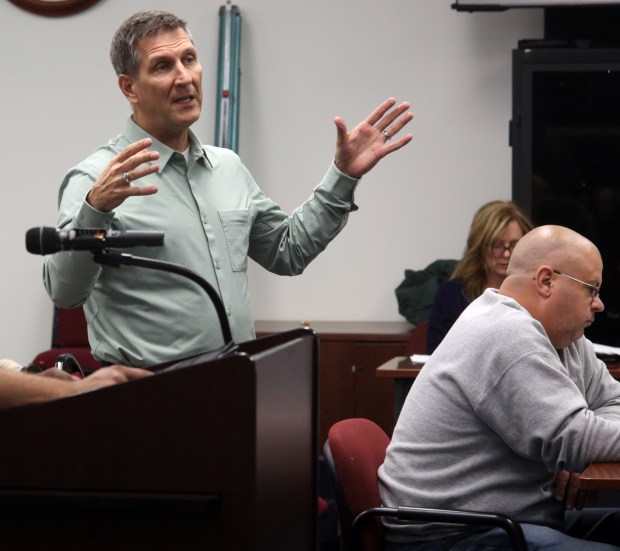Our Opinion: Communities need to be for renewable energy, and support it
November 16, 2024
The testimonials are difficult to ignore.
“Honestly,” said Cynthia Roy, a resident of the quaint borough of Nesquehoning in Carbon County, “it doesn’t affect us at all.”
“I have no issues with it,” fellow resident Tom Hunadi added.
“It’s been a quiet neighbor up there that goes about its business,” Nesquehoning Council President David Hawk concluded.
If they were talking about a skateboard park, a new smoothie shop, a sports complex, they rather universally would be considered lucky. But, they weren’t talking about any of those things. They’re talking about one of the largest solar farm projects in Pennsylvania, the benefits of which too few people around here really want to consider for their own communities.
There’s no question, given the current environmental challenges the world faces due to greenhouse gas emissions, we’re in desperate need of a more diverse palette of renewable energy sources, and solar farms like the one in Nesquehoning are among the most cost-effective to build and, at least according to the Office of Energy Efficiency and Renewable Energy, the one that potentially could ease the burden on a consumer’s pocketbook most.
Yet, it seems hardly a week goes by these days without a community throughout the region flooding a zoning board meeting in protest of a solar farm wherever one might be planned.

Zoning boards put the kibosh to more than a dozen proposed solar farm projects throughout the region in relatively short order in recent months. Four communities in Lackawanna County — Scranton, Taylor, Greenfield Township and Newton Township — offered a firm “Thanks, but no thanks” when solar companies sought special exceptions to build.
One proposal got nixed in Rush Township in Schuylkill County. Another, in Lehman Township, Luzerne County, riled up so many Back Mountain residents, officials moved the hearing to Misericordia University. Many showed up wearing buttons that read “Stop Big Solar.”
Complaints are always the same, and some would be legitimate no matter the proposed project. They range from property values decreasing to noise pollution increasing, the effect of necessary land clearing and wildlife populations and water runoff. Another common theme, though, is the most curious given how little those who live around solar farms ever actually complain about them: The projects, they say, simply change the “character of the neighborhood” too much.
Well, the personal and community benefit to an increased investment in solar energy is that it benefits everybody. It reduces costs and can be developed without the air pollution created by fossil fuels. No less a source than the United Nations is clear on the role we all need to play in fixing our environmental issues: To avoid the worst climate change promises to throw at Earth, emissions need to be reduced by almost half by 2030 and reach net-zero by 2050.
Solar developers aren’t the only groups fighting the fight against the NIMBY argument — “Not in my backyard” — but they’re the ones hurt by it most. Of course, they could and should be focused on building on plots of land scarred environmentally by the coal industry around here during a time when environmental concerns were hardly a consideration when it came to generating power. But the reality is, not all of them are in ideal locations, and more solar facilities are going to need to be the norm. Not just here, but everywhere.
Either you’re for renewable energy in your own backyard, or you’re not really for renewable energy. And if you’re not, consider the alternative.
Search
RECENT PRESS RELEASES
Related Post



